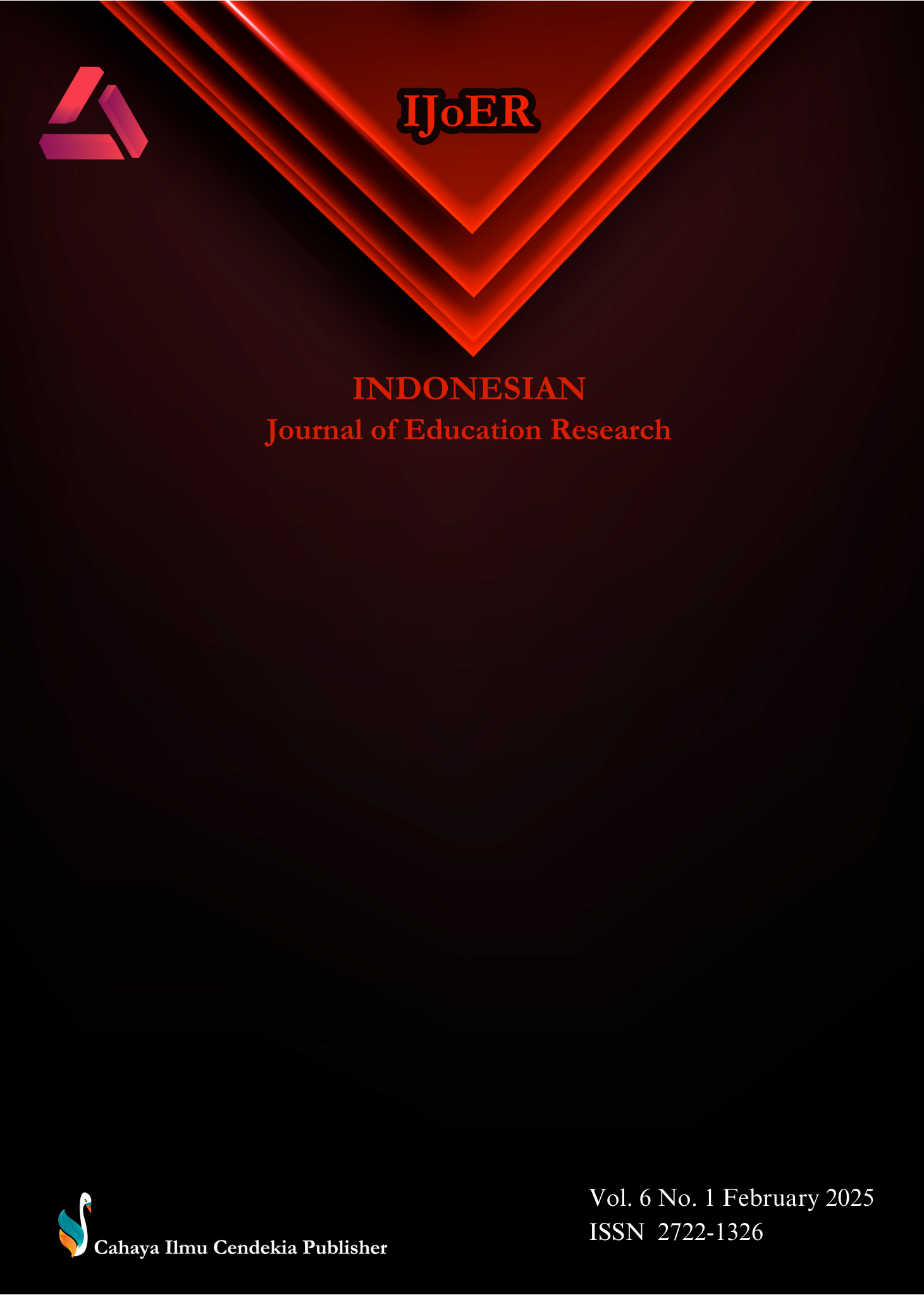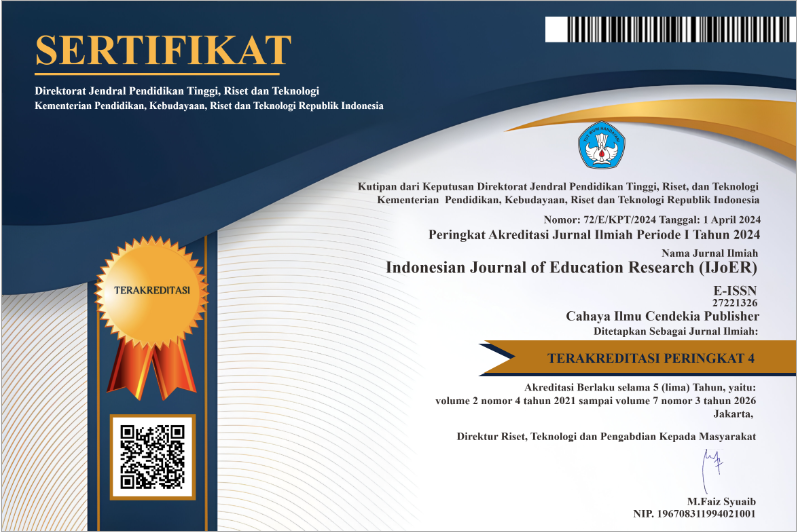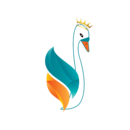Comic-Polya Method Integration in Physics: Enhance Students' Conceptual Understanding and Motivation
Abstract
Purpose of the study: Filipino students' declining science performance calls for innovative instructional methods. This study evaluated the effects of integrating comic-based instruction and the Polya Method in Grade 8 Physics lessons at Opol National Secondary Technical during the 2023–2024 school year.
Methodology: Thirty-six students were selected using convenience sampling. Employing a mixed-method approach, this study used a one-group pre-test and post-test design and focus-group discussions for qualitative data. Conceptual understanding and science motivation were assessed over one month using a 30-item pre- and post-test aligned with the Department of Education competencies.
Main Findings: Pre-test results from 86.11% of students who needed improvement categories were high. After the intervention this percentage distribution decreased to 13.89%, with improvements in the categories of satisfactory (30.56%) and outstanding (13.89%). Qualitative analysis indicated increased science motivation (moderately high to high), and thematic analysis revealed enhanced engagement, enjoyment, academic performance, and problem-solving skills. Post-intervention, mean test scores rose from 11.31 to 19.69 (t = 13.786, P = 0.0001), demonstrating the effectiveness of combining comic-based learning with Polya's method.
Novelty/Originality of this study: This research presents newly gained perspectives on incorporating comic-based learning and the Polya Method to enhance the conceptual understanding and science motivation of Filipino secondary students in selected Physics lessons. Thematic analysis unveiled three unique themes that contribute to the science education research literature focused on the Philippines and these strategies.
References
C. G. Pardo, "Self-Reported Difficulties in Physics as Predictor of Students Achievement," International Journal of Scientific & Engineering Research, vol. 8, no. 3, pp. 1134-1138, 2017, doi: 10.14299/ijser.2017.03.001
F. Ben, "Students’ uptake of physics: a study of South Australian and Filipino physics students," Ph.D. dissertation, School of Education, University of South Australia, 2010.
M. P. E. Morales, "Exploring indigenous game-based physics activities in pre-service physics teachers' conceptual change and transformation of epistemic beliefs," Eurasia Journal of Mathematics, Science and Technology Education, vol. 13, no. 5, pp. 1377-1409, 2016, doi: 10.12973/eurasia.2017.01351a.
A. N. Yunzal Jr. and L. F. Casinillo, "Effect of physics education technology (PhET) simulations: evidence from STEM students’ performance," Journal of Education Research and Evaluation, vol. 4, no. 3, pp. 221-226, 2020, doi: 10.21890/jere.693054.
S. Karim, D. Saepuzaman, and S. P. Sriyansyah, "Jurnal Penelitian & Pengembangan Pendidikan Fisika (JPPF)," vol. 1, pp. 85–90, 2015.
K. Kaptan and O. Timurlenk, "Challenges for science education," Procedia - Social and Behavioral Sciences, vol. 51, pp. 763-771, 2012, doi: 10.1016/j.sbspro.2012.08.186.
S. Bayraktar, "Turkish pre-service teachers’ misconceptions about force and motion," International Science Education Conference, Singapore, 2006, doi: 10.1007/s10763-007-9120-9
J. Clement, "Students’ preconceptions in introductory mechanics," American Journal of Physics, vol. 50, no. 1, pp. 66-72, 1982, doi: 10.1119/1.12989
E. A. Cadorna, G. A. Garcia, and M. A. Ebojo, "Mathematics Anxiety and Performance in Physics 102 of Non-Physics Students," Philippine Physics Journal, vol. 35, pp. 24-34, 2013.
A. N. Tolentino and L. S. Roleda, "Gamified physics instruction in a reformatory classroom setting," in Proceedings of the 10th International Conference on E-Education, E-Business, E-Management, and E-Learning, 2019, pp. 135-140.
K. Diate and I. C. Mordeno, "Filipino Physics Teachers' Teaching Challenges and Perception of Essential Skills for a Supportive Learning Environment," Asia Research Network Journal of Education, vol. 1, no. 2, pp. 61-76, 2021.
J. M. Mirasol, J. V. B. Necosia, B. B. Bicar, and H. P. Garcia, "Statutory policy analysis on access to Philippine quality basic education," International Journal of Educational Research Open, vol. 2, p. 100093, 2021, doi: 10.1016/j.ijedro.2021.100093
R.O.Basco,"The effectiveness of science infographics in improving academic performance among sixth grade pupils of one laboratory school in the Philippines," Research in Pedagogy, vol. 10, no. 2, pp. 313-323, 2020, doi:10 .5937/ pedagogika2002313B.
S. O. Namoco, N. M. Estillore, and R. A. Dela Cruz, "Narrative Inquiry to Understand The National Achievement Test of Primary and Secondary School Students in Misamis Oriental, Philippines," International Journal of Innovation, Education and Research, vol. 11, no. 1, pp. 1-15, 2023, doi: 10.31686/ijier.vol11.iss1.4876.
A. O. Bete, "Students’ knowledge and process skills in learning grade 8 chemistry," Journal of Research, Policy & Practice of Teachers and Teacher Education, vol. 10, no. 1, pp. 1-13, 2020, doi: 10.37134/jrpptte.vol10.1.1.2020
J. S. Guerrero and R. G. Bautista, "Inquiry-based teaching in secondary science," International Journal of Social Sciences & Humanities (IJSSH), vol. 8, no. 2, pp. 146–154, 2023, doi: 10.58885/ijssh.v08i2.146.jg
S. A. Aysegül and Y. Devecioglu, "Student teachers’ levels of understanding and model of understanding about Newton’s laws of motion," Asia-Pacific Forum on Science Learning and Teaching, vol. 11, no. 1, pp. 11-31, 2010, doi: 10.1007/s10763-007-9120-9
A.V.Orleans,"The condition of secondary school physics education in the Philippines: recent developments and remaining challenges for substantive improvements," The Australian Educational Researcher, vol. 34, no. 1, pp. 33-54, 2007, doi:10 .1007/s13384-007-0004-9 .
V. A. Torio, "Physics motivation and research: Understanding today's 21st century learners," International Journal of Education and Research, vol. 3, no. 2, pp. 125-134, 2015, doi: 10.13140/RG.2.1.3211.3681
S. Mi, S. Lu, and H. Bi, "Trends and Foundations in Research on Students' Conceptual Understanding in Science Education: A Method Based on the Structural Topic Model," Journal of Baltic Science Education, vol. 19, no. 4, pp. 551-568, 2020, doi: 10.33225/jbse/20.19.551
P. P. D. Nurhilal, P. Siahaan, and D. T. Chandra, "A profile of students’ conceptual understanding and self-efficacy among eleventh graders in vocational high schools," Journal of Physics: Conference Series, vol. 1013, no. 1, p. 012055, 2018, doi: 10.1088/1742-6596/1013/1/012055
M. Tatalovic, "Science comics as tools for science education and communication: A brief, exploratory study," Journal of Science Communication, vol. 8, no. 4, 2009, doi: 10.22323/2.08040202
H. Tuan, C. Chin, and S. Shieh, "The development of a questionnaire to measure students’ motivation towards science learning," Int. J. Sci. Educ., vol. 27, pp. 639–654, 2005, doi: 10.1080/0950069042000323737
H. Özmen and N. Yıldırım, "Effect of Work Sheets on Students’ Success: Acids and Bases Sample," J. Turk. Sci. Educ., vol. 2, no. 2, pp. 2–5, 2005, doi: 10.12973/tused.10114a
R. M. Ryan and E. L. Deci, "Self-determination theory, as well as the facilitation of intrinsic motivation, social development, and well-being," Am. Psychol., vol. 55, no. 1, pp. 68–78, 2000, doi: 10.1037/0003-066X.55.1.68
T. Sukmahidayanti, "The Utilization of Instructional Media in Teaching English to Young Learners (A Case Study of an Elementary School Teacher in Bandung)," J. Engl. Educ., vol. 3, no. 2, pp. 90–100, 2015, doi: 10.17509/jee.v3i2.17157
H. Saputra and D. Mustika, "Analysis of the Conceptual Understanding Level and Understanding Model of Pre-Service Physics Teachers," J. Penelit. Pendidik. IPA, vol. 8, no. 5, pp. 2367-2372, 2022, doi: 10.29303/jppipa.v8i5.2367
M. Tatalovic, "Science comics as tools for science education and communication: A brief, exploratory study," J. Sci. Commun., vol. 8, no. 4, 2009, doi: 10.22323/2.08040202
J. M. Badeo and B. C. O. K. Koc, "Use of Comic-Based Learning Modules in Mechanics in Enhancing Students’ Conceptual Understanding and Motivation," Science Education International, vol. 32, no. 2, pp. 131-136, 2021, doi: 10.33828/sei.v32.i2.6
S. E. Pinili, "Comic-Themed Booklet Worksheet as Supplementary Materials in Physics," Physics, vol. 103, no. 1, pp. 10-10, 2022, doi: 10.47119/IJRP1001031620223471
C. J. G. Yu and E. D. Sumayao, "Development and Implementation of a Contextualized Comic Book to Improve Students’ Conceptions of Cell Division," The Asia Pacific Journal of Educators and Education, vol. 37, no. 2, pp. 301-323, 2022, doi: 10.21315/apjee2022.37.2.15
R. C. Samosa, "CoSIM (Comics Cum Sim): An Innovative Material in Teaching Biology," Online Submission, vol. 2, no. 4, pp. 19-28, 2021, doi: 10.5281/zenodo.4766bc24e9c6e0391fbb3d3f3a0baca6
M. Barak and P. Mesika, "Teaching methods for inventive problem-solving in junior high school," Thinking Skills and Creativity, vol. 2, no. 1, pp. 19-29, 2007, doi: 10.1016/j.tsc.2006.10.002
T. U. Okafor, "Effect of Polya’s Problem Solving Technique on the Academic Achievement of Senior Secondary School Students in Physics," European Journal of Physics Education, vol. 10, no. 1, pp. 38-48, 2019, doi: 10.20308/ejpe.v10i1.123
S. Çalışkan, G. S. Selçuk, and M. Erol, "Effects of the problem-solving strategies instruction on the students’ physics problem-solving performances and strategy usage," Procedia-Social and Behavioral Sciences, vol. 2, no. 2, pp. 2239-2243, 2010, doi: 10.1016/j.sbspro.2010.03.312
E. Ince, "An overview of problem-solving studies in physics education," Journal of Education and Learning, vol. 7, no. 4, pp. 191-200, 2018, doi: 10.5539/jel.v7n4p191
R. B. Mahinay, N. Panares, and M. E. Magnaong, "Classroom Teachers’ 21st Century Skills in the K–12 Basic Education Curriculum Implementation: Basis for Policy Review to Increase NAT Scores," Zenodo (CERN European Organization for Nuclear Research), 2023, doi: 10.5281/zenodo.1234567
J. W. Creswell, Research Design: Qualitative, Quantitative, and Mixed Methods Approaches, 2nd ed. Thousand Oaks, CA: Sage Publications, 2003, doi: 10.4135/9781506335193
S. Dawadi, S. Shrestha, and R. A. Giri, "Mixed-methods research: A discussion on its types, challenges, and criticisms," Journal of Practical Studies in Education, vol. 2, no. 2, pp. 25-36, 2021, doi: 10.46809/jpse.v2i2.20
S. L. Siedlecki, "Quasi-experimental research designs," Clinical Nurse Specialist, vol. 34, no. 5, pp. 198-202, 2020, doi: 10.1097/NUR.0000000000000523
S. C. Naelga, M. C. Rayon, and J. C. Mila, "The employability and opportunities of the graduates of the Modeling Program of the Opol National Technical High School, Mindanao, Philippines, 9000," Dilemas Contemporáneos: Educación, Política y Valore, vol. 6, Special Issue, 2019, doi: 10.5281/zenodo.1234568
I. Etikan, S. A. Musa, and R. S. Alkassim, "Comparison of convenience sampling and purposive sampling," American Journal of Theoretical and Applied Statistics, vol. 5, no. 1, pp. 1-4, 2016, doi: 10.11648/j.ajtas.20160501.11
R. Yeboah, U. K. Abonyi, and A. W. Luguterah, "Making primary school science education more practical through appropriate interactive instructional resources: A case study of Ghana," Cogent Education, vol. 6, no. 1, p. 1611033, 2019, doi: 10.1080/2331186X.2019.1611033
A. N. Tolentino and L. S. Roleda, "Gamified physics instruction in a reformatory classroom setting," in Proceedings of the 10th International Conference on E-Education, E-Business, E-Management, and E-Learning, 2019, pp. 135-140. doi: 10.1145/3306500.3306515
G. B. Benedek and F. M. Villars, Physics with illustrative examples from medicine and biology: mechanics. Springer Science & Business Media, 2000, doi: 10.1007/978-1-4612-1282-5
P. R. Murti and N. S. Aminah, "The identification of high school students’ knowledge of Newton’s law of science literacy using a test based on the nature of science (NOS)," Journal of Physics: Conference Series, vol. 1153, no. 1, p. 012122, 2019, doi: 10.1088/1742-6596/1153/1/012122
I. Kaniawati, N. J. Fratiwi, A. Danawan, I. Suyana, A. Samsudin, and E. Suhendi, "Analyzing students’ misconceptions about Newton’s laws through four-tier Newtonian test (FTNT)," Journal of Turkish Science Education, vol. 16, no. 1, pp. 110-122, 2019, doi: 10.12973/tused.10114a
S. Asakle and M. Barak, "Location-Based Learning and Its Effect on Students’ Understanding of Newton’s Laws of Motion," Journal of Science Education and Technology, vol. 31, pp. 403-413, 2022, doi: 10.1007/s10956-022-09963-2
D. Huffman and P. Heller, "What does the force concept inventory actually measure?" The Physics Teacher, vol. 33, no. 3, pp. 138-143, 1995, doi: 10.1119/1.2344171
S. M. Glynn, P. Brickman, N. Armstrong, and G. Taasoobshirazi, "Science motivation questionnaire II: Validation with science majors and nonscience majors," Journal of Research in Science Teaching, vol. 48, no. 10, pp. 1159-1176, 2011, doi: 10.1002/tea.20442
M. Barak and P. Mesika, "Teaching methods for inventive problem-solving in junior high school," Thinking Skills and Creativity, vol. 2, no. 1, pp. 19-29, 2007, doi: 10.1016/j.tsc.2006.10.002
A. R. Othman, T. S. Yin, S. Sulaiman, M. I. M. Ibrahim, and M. Razha-Rashid, "In questionnaire surveys, mean and standard deviation are used," Menemui Matematik, vol. 33, no. 1, pp. 11-22, 2011, doi: 10.11113/jt.v78.8983
P. Bhandari, "What is Effect Size and Why Does It Matter? (Examples)," Scribbr, 2023. [Online]. Available: https://www.scribbr.com/statistics/effect-size/ (Accessed: 2024-03-25)
K. J. D. Galarosa and D. A. Tan, "Students’ academic performance and motivation in physics using a microlearning approach via cybergogy learning environment," Sci. Int. (Lahore), vol. 34, no. 2, pp. 157-170, 2022, doi: 10.5281/zenodo.360561820
V. Y. Benben and M. A. C. Bug-os, "Physics students’ academic achievement and motivation in a gamified formative assessment," American Journal of Educational Research, vol. 10, no. 6, pp. 385-390, 2022, doi: 10.12691/education-10-6-2
K. L. Peel, "A beginner's guide to applied educational research using thematic analysis," Practical Assessment, Research, and Evaluation, vol. 25, no. 1, p. 2, 2020, doi: 10.7275/ryr5-k983
M. E. Kiger and L. Varpio, "Thematic analysis of qualitative data: AMEE Guide No. 131," Medical Teacher, vol. 42, no. 8, pp. 846-854, 2020, doi: 10.1080/0142159X.2020.1755030
S. A. Sari, "The development of comic-based learning on reaction rate makes learning more interesting and improves student’s learning outcomes," Jurnal Pendidikan Sains Indonesia (Indonesian Journal of Science Education), vol. 9, no. 1, pp. 151-167, 2021, doi: 10.24815/jpsi.v9i1.18852
S. E. Zahartian, M. Junus, and N. F. Sulaeman, "Learning physics through comics media: An enhancement of Newton law topics on online learning," ScienceEdu, vol. 5, no. 2, pp. 35-40, 2023, doi: 10.19184/se.v5i2.30900
M. F. N. M. Utami, M. Mastuang, and S. Haryandi, "Is 21st century learning need STEM approach built into physics comics?" Jurnal Ilmiah Pendidikan Fisika, vol. 7, no. 2, pp. 319-327, 2023, doi: 10.29303/jipf.v7i2.319
A. E. Damayanti and H. Kuswanto, "The use of android-assisted comics to enhance students’ critical thinking skills," Journal of Physics: Conference Series, vol. 1440, no. 1, p. 012039, 2020, doi: 10.1088/1742-6596/1440/1/012039
R. Fabillar, J. Ummas, J. Pateyec, M. G. Domingo, P. P. Canuto, M. Choycawen, and Y. Lumidao, "Science comics as educational materials and its impact on elementary students’ science academic performance," Pakistan Journal of Life and Social Sciences, vol. 22, no. 1, pp. 6176–6188, 2024, doi: 10.22592/pjls.v22i1.6176
C. L. Tilley, P. H. Casumpang, and O. C. Enteria, "Effectiveness of developed comic strips as instructional material in science classes," International Journal of Innovation, Education, and Research, vol. 5, no. 12, pp. 44-54, Dec. 2017, doi: 10.31686/ijier.v5i12.1835
S. F. Lin, H. Shyang Lin, L. Lee, and L. D. Yore, "Are science comics a good medium for science communication? Nanotechnology's case for public learning," International Journal of Science Education, Part B: Communication and Public Engagement, vol. 5, no. 3, pp. 276–294, 2015, doi: 10.1080/21548455.2015.1052582
C. Y. Piaw, "Using content-based humorous cartoons in learning materials to improve students’ reading rate, comprehension, and motivation: Is it a wrong technique?" Procedia: Social and Behavioral Sciences, vol. 64, pp. 352–361, 2012, doi: 10.1016/j.sbspro.2012.11.042
M. Farinella, "The potential of comics in science communication," Jcom, vol. 17, no. 01, Y01, 2018, doi: 10.22323/2.17010401
G. Linardatos and D. Apostolou, "Investigating high school students’ perceptions about digital comics creation in the classroom," Education and Information Technologies, vol. 28, no. 8, pp. 10079-10101, 2023, doi: 10.1007/s10639-023-11652-1
M. S. Kim, M. S. Chung, H. G. Jang, and B. S. Chung, "The use of educational comics to teach anatomy to multiple student groups," Anatomical Sciences Education, vol. 10, no. 1, pp. 79–86, 2017, doi: 10.1002/ase.1625
E. Cholisoh, "Penerapan media komik sains untuk meningkatkan minat dan hasil belajar siswa pada konsep gejala pemanasan global di SMA Negeri 10 Bandung," Jurnal Teknologi Pendidikan: Jurnal Penelitian dan Pengembangan Pembelajaran, vol. 6, no. 1, pp. 36–40, 2021, doi: 10.17509/jtp.v6i1.12345
S. A. Annisa, A. D. Lesmono, and Y. Yushardi, "Comic-based module development andro-web to improve problem-solving ability in physics in high school students," Berkala Ilmiah Pendidikan Fisika, vol. 8, no. 1, pp. 40-49, 2020, doi: 10.20527/bipf.v8i1.12345
F. Haroky, S. Nikmah, I. Wilujeng, and H. Kuswanto, "Android-assisted physics comic learning trains students’ conceptual understanding of Newton’s gravity," Journal of Physics: Conference Series, vol. 1233, no. 1, p. 012045, 2019, doi: 10.1088/1742-6596/1233/1/012045
J. Yoon, H. Lee, and H. Son, "Effects of an interactive coaching intervention on quality of life and psychological factors for colorectal cancer survivors: A single group pre and posttest design," Eur. J. Oncol. Nurs., vol. 66, p. 102413, 2023, doi: 10.1016/j.ejon.2023.102413
Copyright (c) 2025 Charmagne Kris C. Gardose, Arlene A. Castillo, Melvin H. Madroñal

This work is licensed under a Creative Commons Attribution 4.0 International License.
Authors who publish with this journal agree to the following terms:
- Authors retain copyright and acknowledge that the Indonesian Journal of Education Research (IJoER) is the first publisher licensed under a Creative Commons Attribution 4.0 International License.
- Authors are able to enter into separate, additional contractual arrangements for the non-exclusive distribution of the journal's published version of the work (e.g., post it to an institutional repository or publish it in a book), with an acknowledgment of its initial publication in this journal.
- Authors are permitted and encouraged to post their work online (e.g., in institutional repositories or on their website) prior to and during the submission process, as it can lead to productive exchanges and earlier and greater citation of published work.







.png)
.png)




















